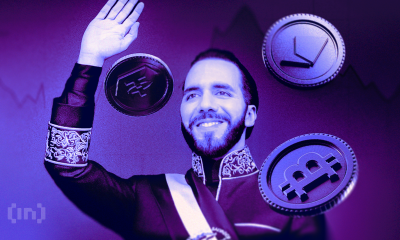Market
Algorand Surges 19% as Open Interest Reaches $81 Million

Algorand’s price has surged 19% over the past 24 hours, making it the market’s top gainer. The double-digit price rally has pushed the altcoin’s price to a two-year high of $0.34.
With strengthening trading activity, the ALGO token price may attempt to rally above $1 for the first time since 2022. This analysis delves into why that is possible.
Algorand Open Interest Hits All-Time High
A rise in open interest has accompanied ALGO’s double-digit price hike. This has rallied by 28% over the past 24 hours and is currently at an all-time high of $81 million.
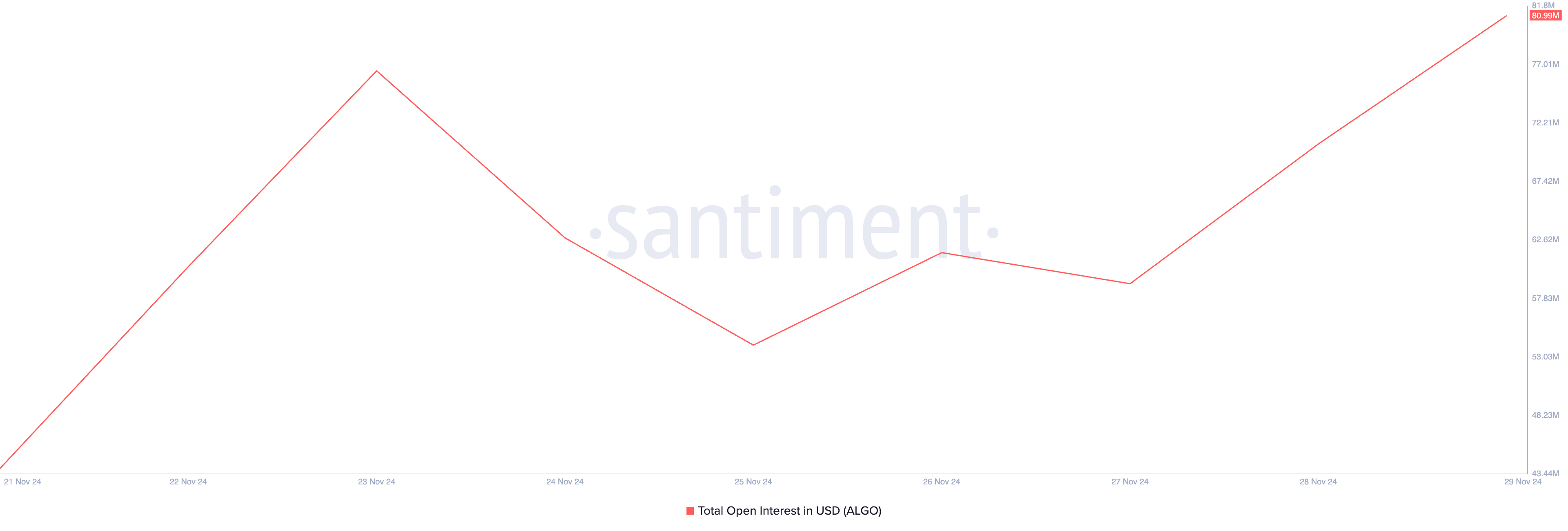
Open interest measures the total number of outstanding contracts (futures or options) in an asset’s derivatives market and shows the level of trader participation. When it spikes during a price rally, it suggests increased market confidence and participation. It indicates that the rally is backed by strong demand and hints at sustained price growth.
Moreover, ALGO’s Moving Average Convergence Divergence (MACD) indicator observed on a daily chart confirms this bullish outlook. At press time, the altcoin’s MACD line (blue) rests atop its signal line.
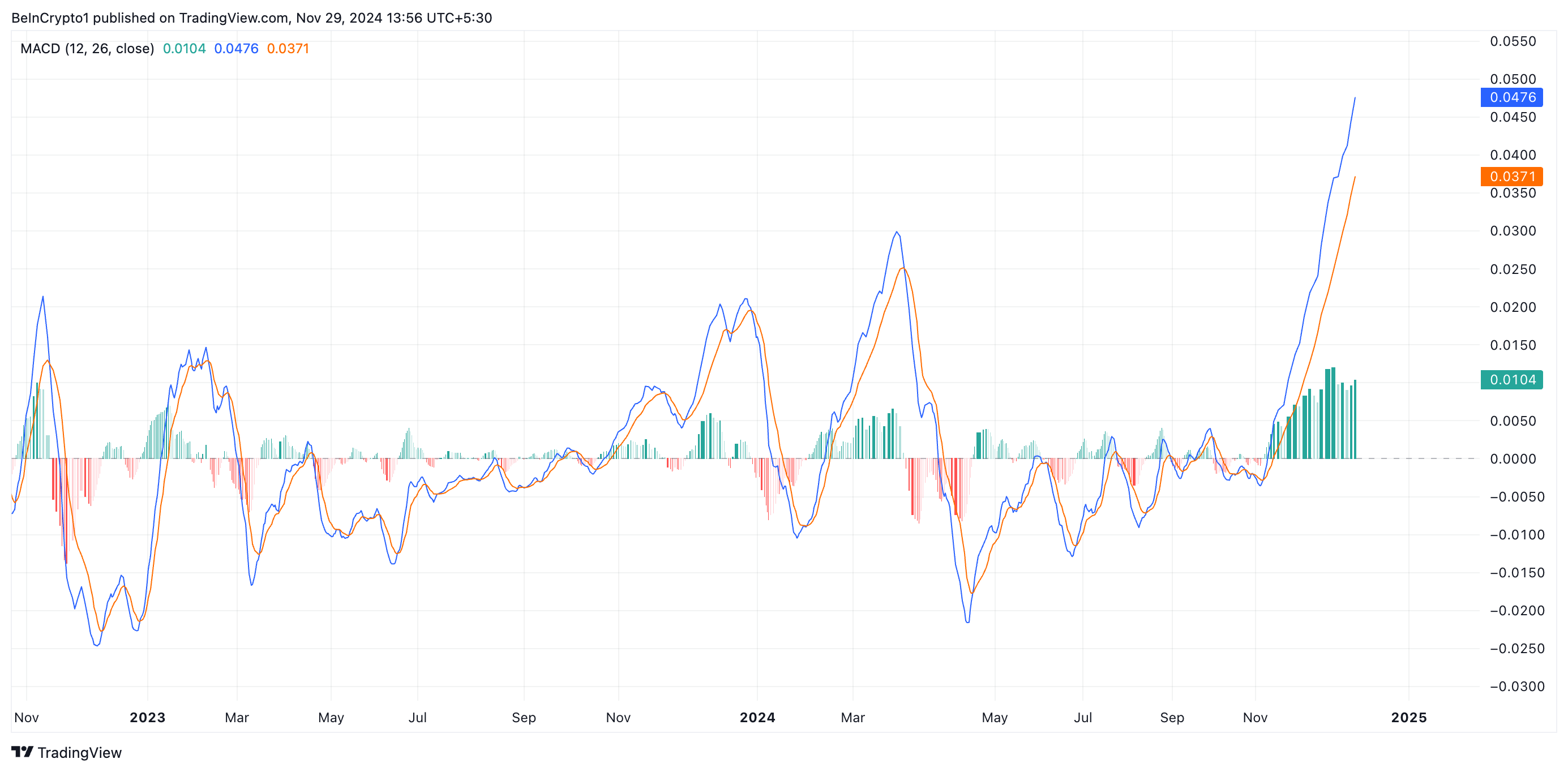
This indicator measures an asset’s price trends and momentum and identifies potential reversal points. As in ALGO’s case, when the MACD line is above the signal line, the asset’s price is experiencing upward momentum, signaling a buying opportunity. This crossover indicates that short-term gains are outpacing long-term trends, reflecting positive market sentiment.
ALGO Price Prediction: $1 May Be Within Reach
Currently priced at $0.34, ALGO is holding steady above crucial support at $0.30. If this level strengthens as a solid support floor, it could drive the altcoin toward $0.47. A breakout above this resistance could potentially push it past the $0.50 mark and bring $1 into view.
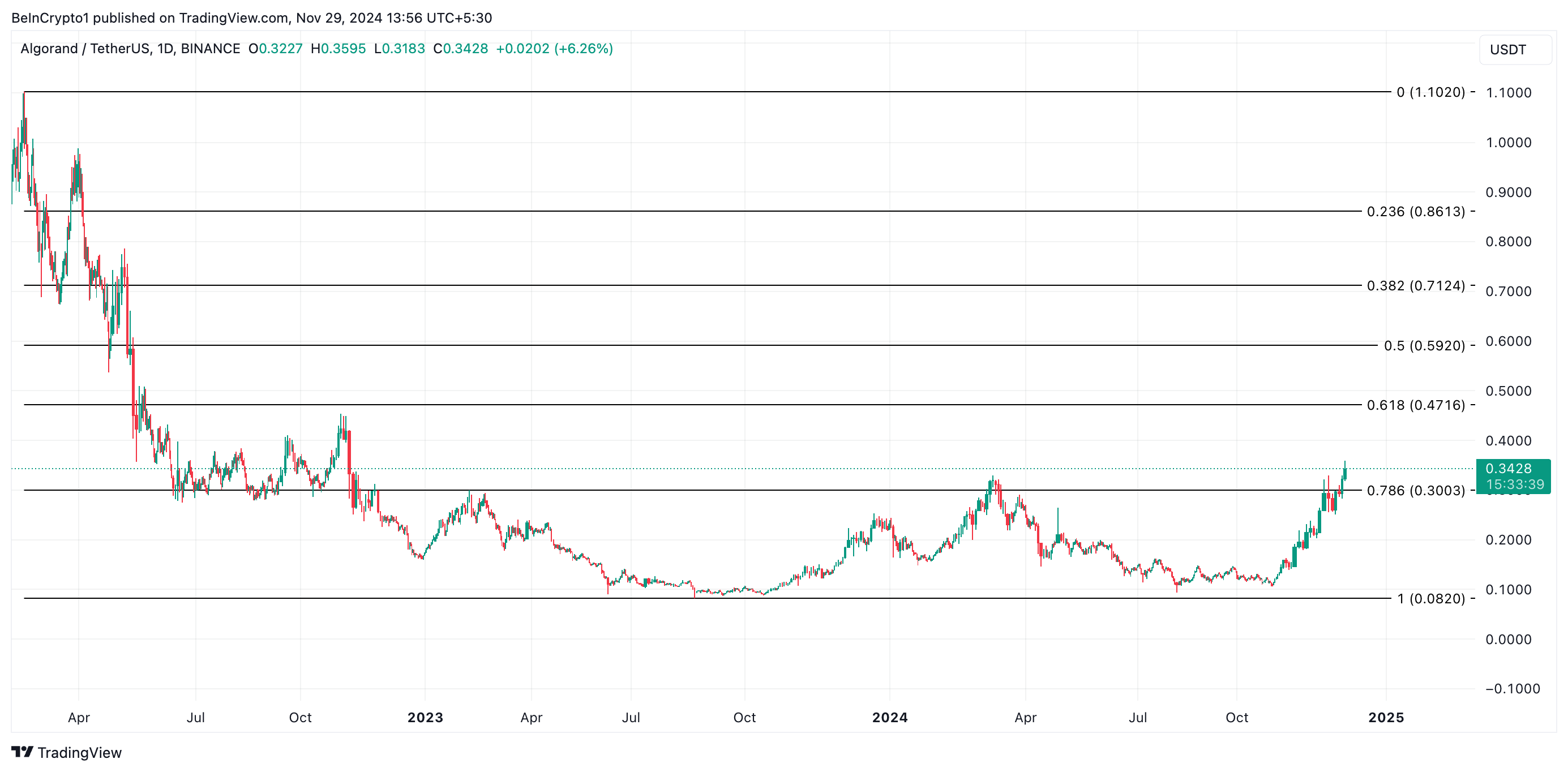
However, a shift in market sentiment could invalidate this bullish outlook. Increased selling pressure could cause the ALGO token price to shed its recent gains, pushing it below support at $0.30 and potentially sending it toward $0.08.
Disclaimer
In line with the Trust Project guidelines, this price analysis article is for informational purposes only and should not be considered financial or investment advice. BeInCrypto is committed to accurate, unbiased reporting, but market conditions are subject to change without notice. Always conduct your own research and consult with a professional before making any financial decisions. Please note that our Terms and Conditions, Privacy Policy, and Disclaimers have been updated.
Market
Don’t Fall for These Common Crypto Scams

ZachXBT, a well-known blockchain investigator, recently shared two key “minimum checks” on Telegram to avoid crypto scams.
He emphasized that users must accept full financial responsibility if they take risks in these situations and added that recovering lost funds would be extremely difficult.
Evaluating a Project’s Credibility is Crucial
ZachXBT highlighted two critical scenarios: depositing funds into forked DeFi protocols on newly launched EVM chains and getting scammed by projects with few smart followers on Kaito.
“If you make either of these decisions, it is your own personal choice to risk funds, and I will NOT help you,” ZachXBT stressed.
Many newly launched DeFi protocols on EVM chains are replicas of existing ones. Their teams often do not create original code but instead, fork from established protocols. This process requires minimal technical skills yet introduces significant security risks.
A recent incident highlighted the risks in the DeFi space. The DeFi protocol SIR.trading was reportedly hacked, leading to an estimated loss of $350,000. Despite the project’s documentation promoting it as a “new DeFi protocol for safer leveraged trading,” it acknowledged the risks related to smart contract vulnerabilities.
This case illustrates how new DeFi protocols often become targets for hackers. Additionally, in late March, the DeFi lending protocol Abracadabra suffered a loss of approximately $13 million due to an exploit involving collateralized tokens.
The second situation ZachXBT warned about involves getting “rugged” (falling victim to a rug pull) by projects with few smart followers on Kaito. Kaito is an AI-powered analysis tool that measures real community interest. He advised that checking followers’ numbers and quality is a basic step to avoid falling for projects that use fake engagement or empty marketing hype.
Investor Xero agreed with ZachXBT, stating that Kaito can be a credibility assessment tool.
“Kaito has become an amazing security and reputation tool that I value over others. It can help you identify an impersonator or a new rug project fast. If a 40k+ follower project isn’t connecting with real smart followers, it’s not legit,” Investor Xero commented.
Other Emerging Crypto Scams
In addition to ZachXBT’s warnings, several new scam tactics have recently been flagged.
Investor Jerome warned about a scheme that exploits browsers’ automatic download function to trick users into downloading malicious software.
Another method involves scammers creating and sending small transactions. They would be often as little as 0.001 tokens—using fake wallet addresses that closely resemble legitimate ones. Their goal is to deceive users into copying and pasting the fraudulent address when making future transactions.
Additionally, Microsoft has identified StilachiRAT, a new remote access trojan specifically designed to target cryptocurrency wallets and login credentials.
According to a Chainalysis report, from 2021 to 2024, decentralized finance (DeFi) platforms have been the primary targets of crypto hacks.

The report explains that DeFi platforms may be more vulnerable because developers prioritize rapid growth and launch over security measures. This lack of security focus makes them prime targets for hackers.
Disclaimer
In adherence to the Trust Project guidelines, BeInCrypto is committed to unbiased, transparent reporting. This news article aims to provide accurate, timely information. However, readers are advised to verify facts independently and consult with a professional before making any decisions based on this content. Please note that our Terms and Conditions, Privacy Policy, and Disclaimers have been updated.
Market
This Is How Dogecoin Price Reacted To Elon Musk’s Comment
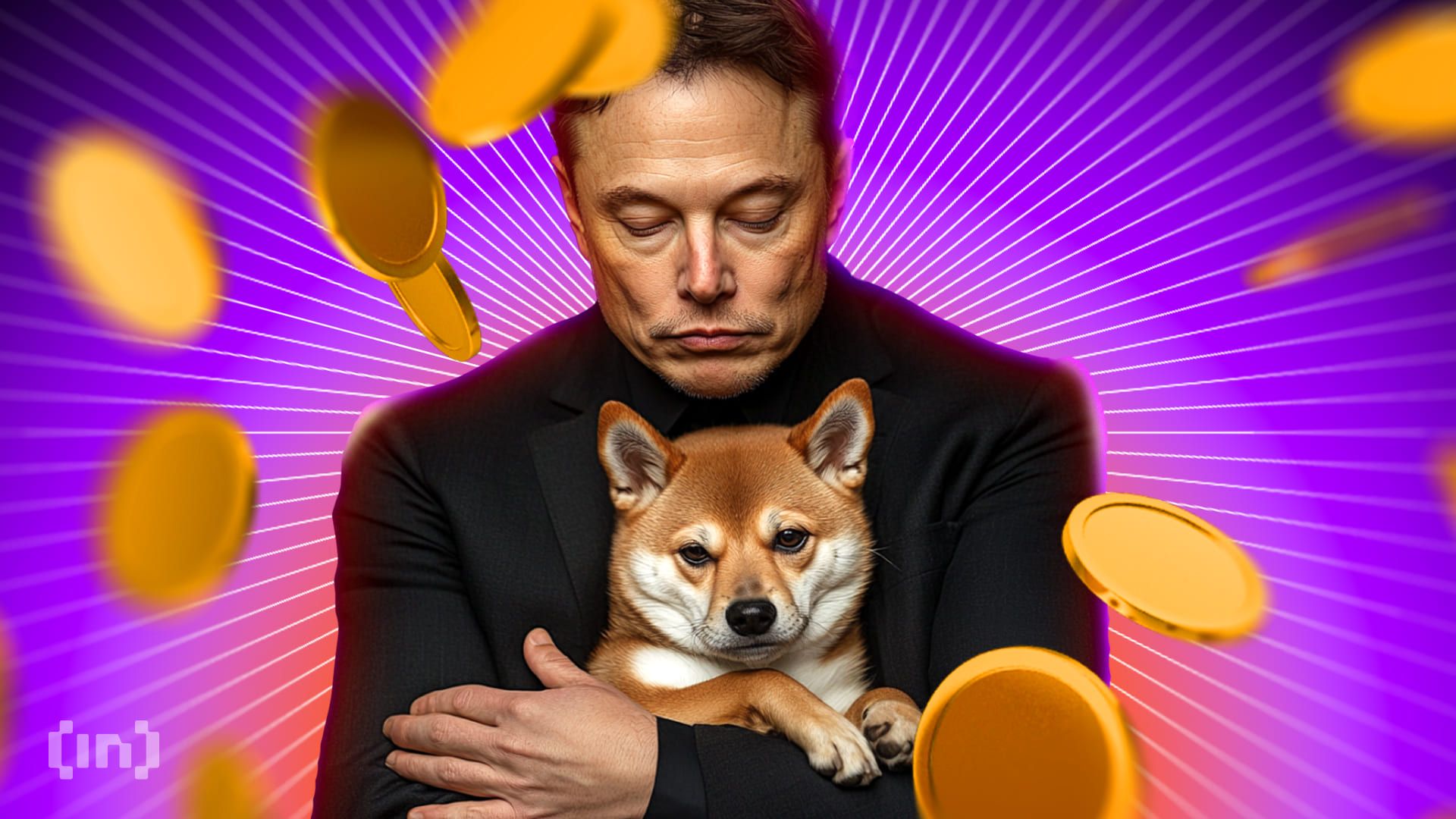
Dogecoin has faced a series of setbacks recently, including a failed breakout attempt that led to a decline in its price. This downward movement was further exacerbated by a recent comment from Elon Musk, which cast doubt on Dogecoin’s future.
However, despite these challenges, the altcoin is showing some signs of recovery, largely driven by long-term holders (LTHs) who accumulate more DOGE at current low prices.
Dogecoin Is Facing Mixed Signals
Dogecoin’s Network Value to Transaction (NVT) ratio has spiked significantly, reaching a three-month high. This suggests that the network’s value does not match the number of transactions, pointing to a possible lack of investor confidence.
Elon Musk’s recent comment regarding DOGE further fueled the discourse surrounding the cryptocurrency. He clarified that the US government does not intend to use Dogecoin in any form, which led to some negative sentiment. This statement dampened expectations for the coin, although it hasn’t completely derailed its market standing.

The macro momentum of Dogecoin shows signs of stabilizing, as evidenced by the recent spike in the HODLer Net Position Change. LTHs have been actively accumulating DOGE during the recent dip, which indicates strong conviction among these holders.
This accumulation provides a level of support, potentially helping the coin recover and preventing further price declines. The increased position change suggests that LTHs are confident in the long-term viability of Dogecoin despite recent market turbulence and Musk’s controversial comment.
This continued accumulation by LTHs could lead to a floor forming under Dogecoin’s price, providing a buffer against further bearish pressures. As the market stabilizes and sentiment shifts, these holders could become a driving force that will trigger the next upward movement.

DOGE Price Stumbles, But Can It Recover?
Dogecoin is currently trading at $0.163, with the price just below the support level of $0.164. Over the last five days, the coin has experienced a 16% decline following a failed attempt to break through the $0.198 resistance level. This failure to breach key resistance levels indicates that DOGE may not experience immediate price gains without external catalysts.
Given the current market conditions, it’s likely that Dogecoin will not experience significant declines in the near future. The coin may reclaim $0.164 as support and continue consolidating just below the $0.198 resistance. However, this consolidation could persist until stronger market cues emerge to push the price higher.

The only scenario in which this bullish-neutral outlook would be invalidated is if Musk’s comment causes further damage to DOGE’s price. In that case, the meme coin could dip to $0.147, extending its recent losses. A sustained downturn would signal more negative sentiment in the market and potentially halt Dogecoin’s recovery.
Disclaimer
In line with the Trust Project guidelines, this price analysis article is for informational purposes only and should not be considered financial or investment advice. BeInCrypto is committed to accurate, unbiased reporting, but market conditions are subject to change without notice. Always conduct your own research and consult with a professional before making any financial decisions. Please note that our Terms and Conditions, Privacy Policy, and Disclaimers have been updated.
Market
Bitcoin Price Nears $80,000; Fuels Death Cross Potential

Bitcoin’s recent price action has shown some concerning signs. The crypto king has failed to break through key resistance levels, leaving it vulnerable to further declines.
As Bitcoin inches closer to testing the $80,000 support level, the potential for a Death Cross looms, increasing bearish sentiment in the market.
Bitcoin Investors Are Skeptical
Short-Term Holders (STHs), who buy at higher prices, are primarily responsible for the ongoing losses. These investors have been actively noting losses in response to Bitcoin’s volatile market conditions, reflecting the unpredictable environment that has made it difficult for new investors to navigate.
Meanwhile, Long-Term Holders (LTHs) continue to realize profits, benefiting from their extended market presence. However, the current market conditions show stagnation in new capital inflows, with LTH profits offset by STH losses. This creates weaker demand and resistance, signaling a potential slowdown in price momentum.
Maintaining bullishness in the market typically requires consistent capital inflows, but the market now seems to be lacking that crucial support. The overall sentiment reflects a neutral stance, with both profit-taking and loss-realization balancing out.
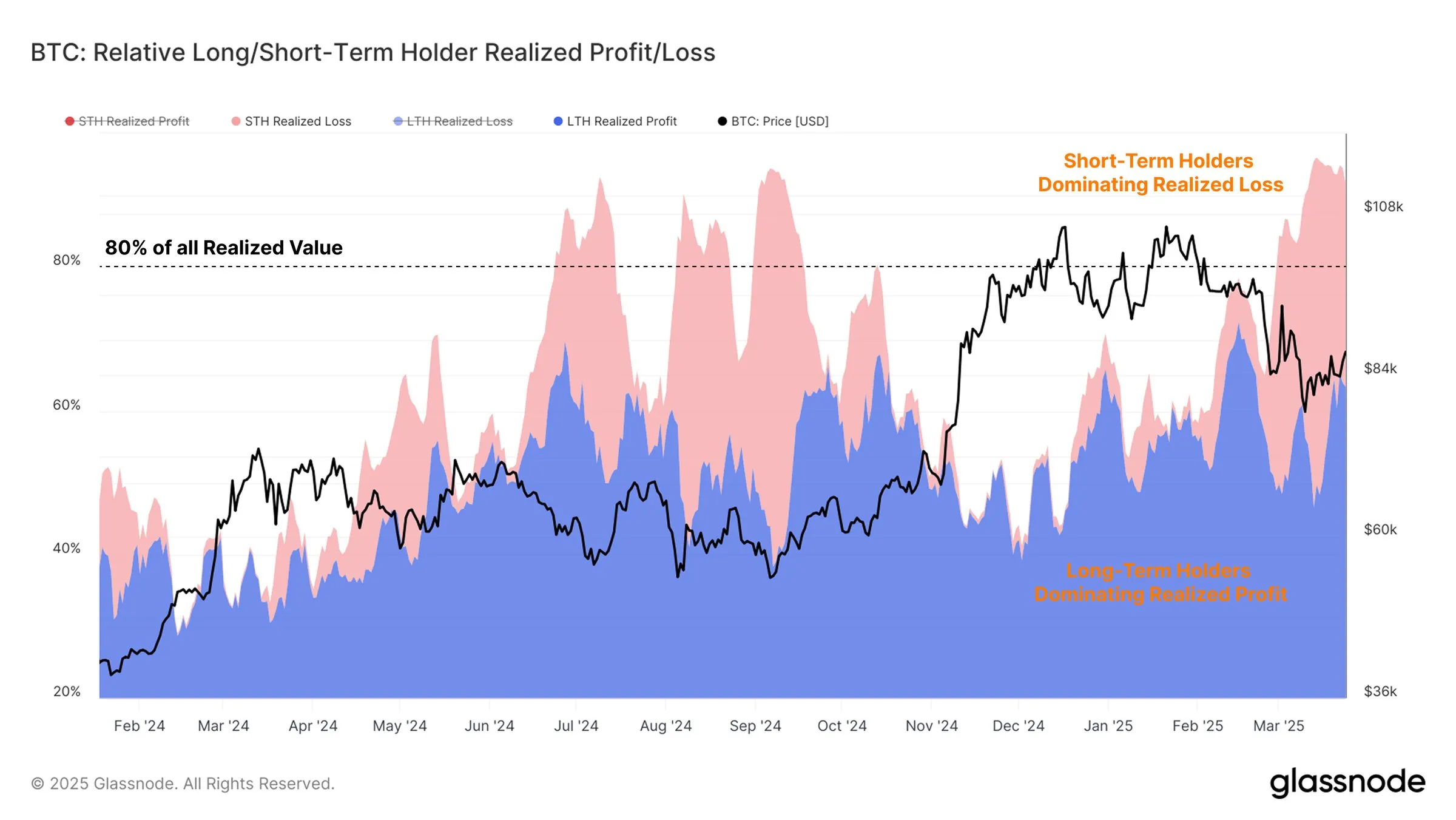
The crypto king’s macro momentum is showing additional signs of bearish pressure, particularly with the Exponential Moving Averages (EMAs). The 200-day EMA is less than 3% away from crossing the 50-day EMA, which would result in a Death Cross. This technical pattern has historically signaled significant corrections in price, marking a potential end to Bitcoin’s 18-month-long Golden Cross.
As the EMAs approach this critical point, traders and investors are closely watching for any signs of a correction. The fear of a Death Cross brings further concern to Bitcoin’s price stability. If the 50-day EMA crosses below the 200-day EMA, it could trigger more sell-offs, intensifying the bearish sentiment in the market.
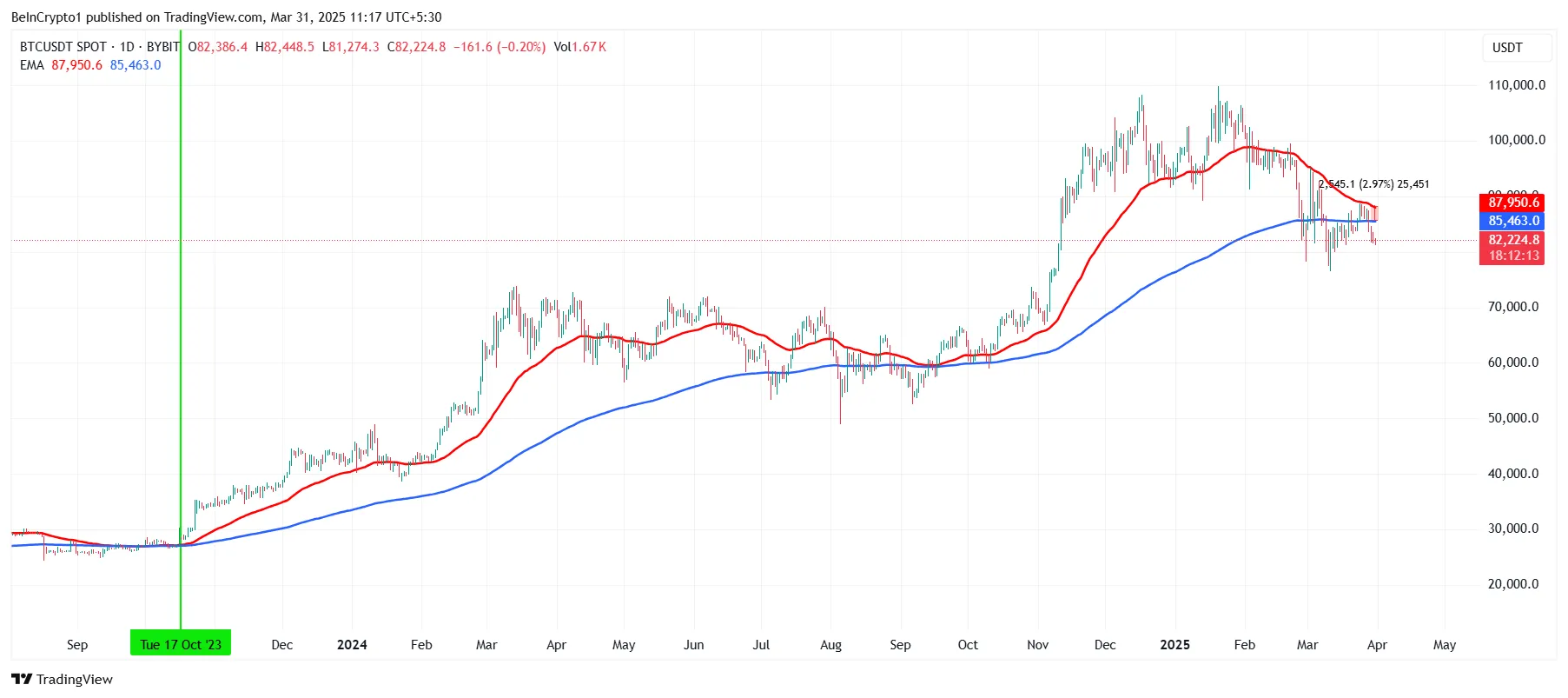
Is BTC Price Primed For Further Decline?
Bitcoin is currently trading at $82,248, nearing the key psychological support level of $80,000. Despite attempts at a breakout, Bitcoin has failed to move beyond the two-month-long broadening descending wedge pattern. This pattern suggests that Bitcoin could be on the brink of further decline.
If the downward momentum persists, Bitcoin is likely to fall through the $80,000 support level and approach $76,741. This scenario would reinforce the bearish outlook, especially considering the technical indicators and the lack of strong buying support. A breakdown below these levels could signal a deeper correction, with the potential for further declines.

However, this short-term bearish thesis can be invalidated if Bitcoin’s price manages to reclaim $82,761 as support. If Bitcoin breaks through the $85,000 barrier, it could break out of the current pattern, signaling a potential reversal. A strong rally above $86,822 would suggest a resumption of the bullish trend, invalidating the bearish momentum that currently dominates the market.
Disclaimer
In line with the Trust Project guidelines, this price analysis article is for informational purposes only and should not be considered financial or investment advice. BeInCrypto is committed to accurate, unbiased reporting, but market conditions are subject to change without notice. Always conduct your own research and consult with a professional before making any financial decisions. Please note that our Terms and Conditions, Privacy Policy, and Disclaimers have been updated.
-

 Ethereum22 hours ago
Ethereum22 hours agoEthereum Analyst Eyes $1,200-$1,300 Level As Potential Acquisition Zone – Details
-

 Ethereum21 hours ago
Ethereum21 hours agoWhales Accumulate 470,000 Ethereum In One Week – Bullish Momentum Ahead?
-

 Ethereum23 hours ago
Ethereum23 hours agoEthereum May Have Hit Cycle Bottom, But Pricing Bands Signal Strong Resistance At $2,300
-

 Bitcoin22 hours ago
Bitcoin22 hours agoGold Keeps Outperforming Bitcoin Amid Trump’s Trade War Chaos
-
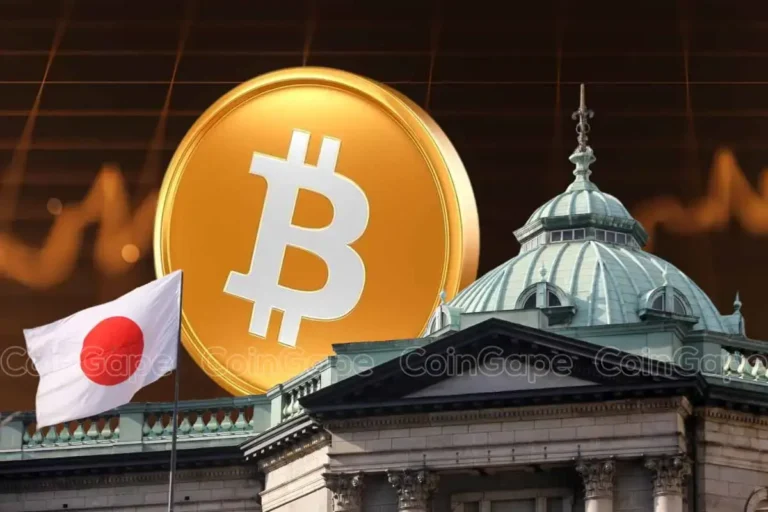
 Regulation18 hours ago
Regulation18 hours agoJapan Set To Classify Cryptocurrencies As Financial Products, Here’s All
-
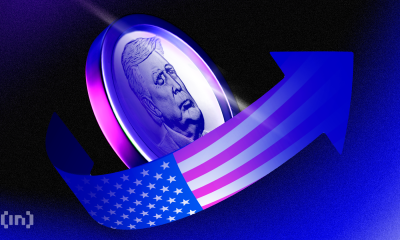
 Market18 hours ago
Market18 hours agoTop 3 Made in USA Coins to Watch This Week
-

 Market23 hours ago
Market23 hours agoBitcoin (BTC) Whales Accumulate as Market Faces Uncertainty
-
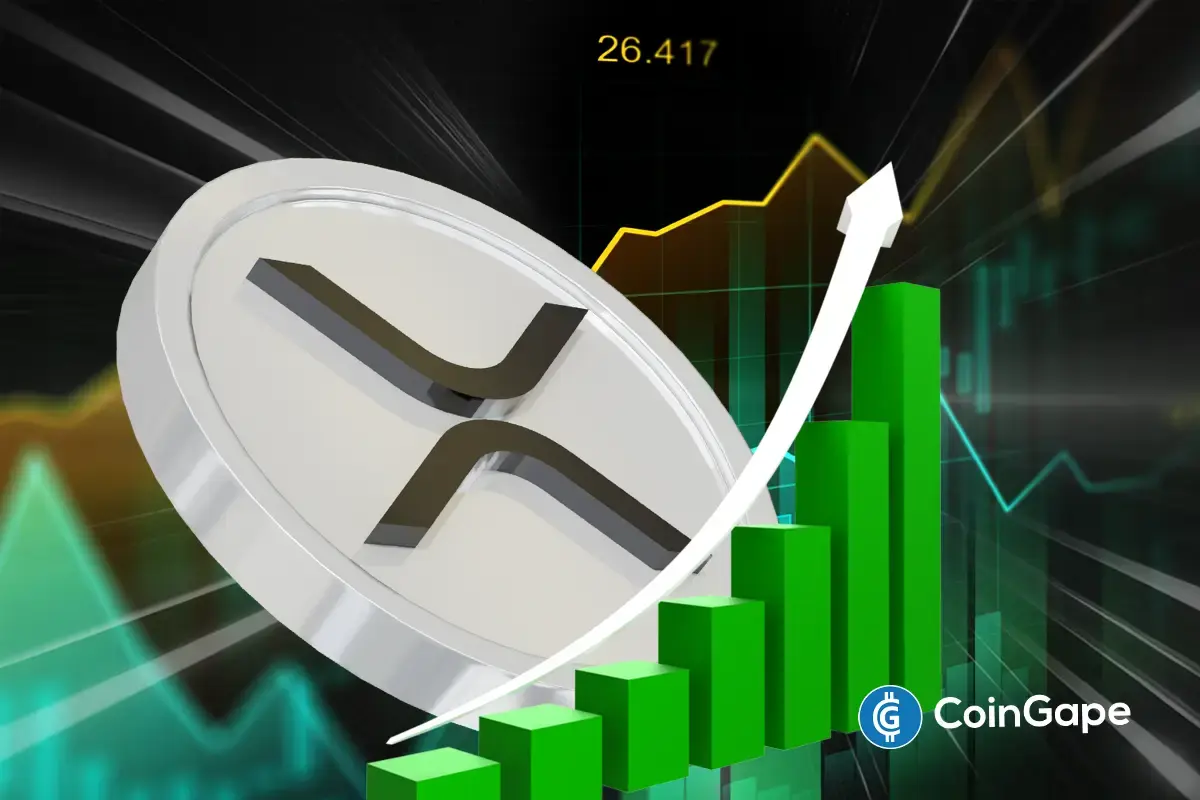
 Altcoin22 hours ago
Altcoin22 hours agoAnalyst Reveals Why The XRP Price Can Hit ATH In The Next 90 To 120 Days





